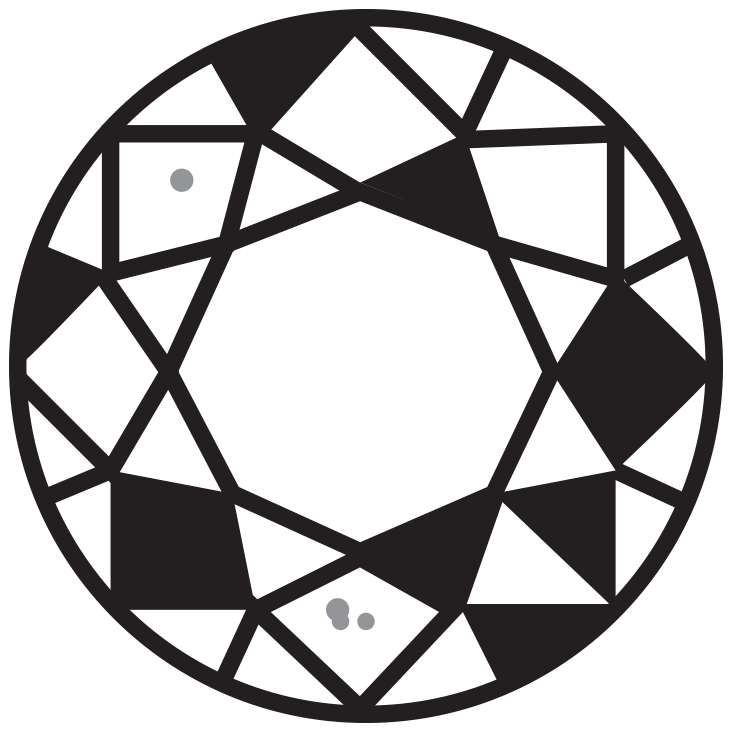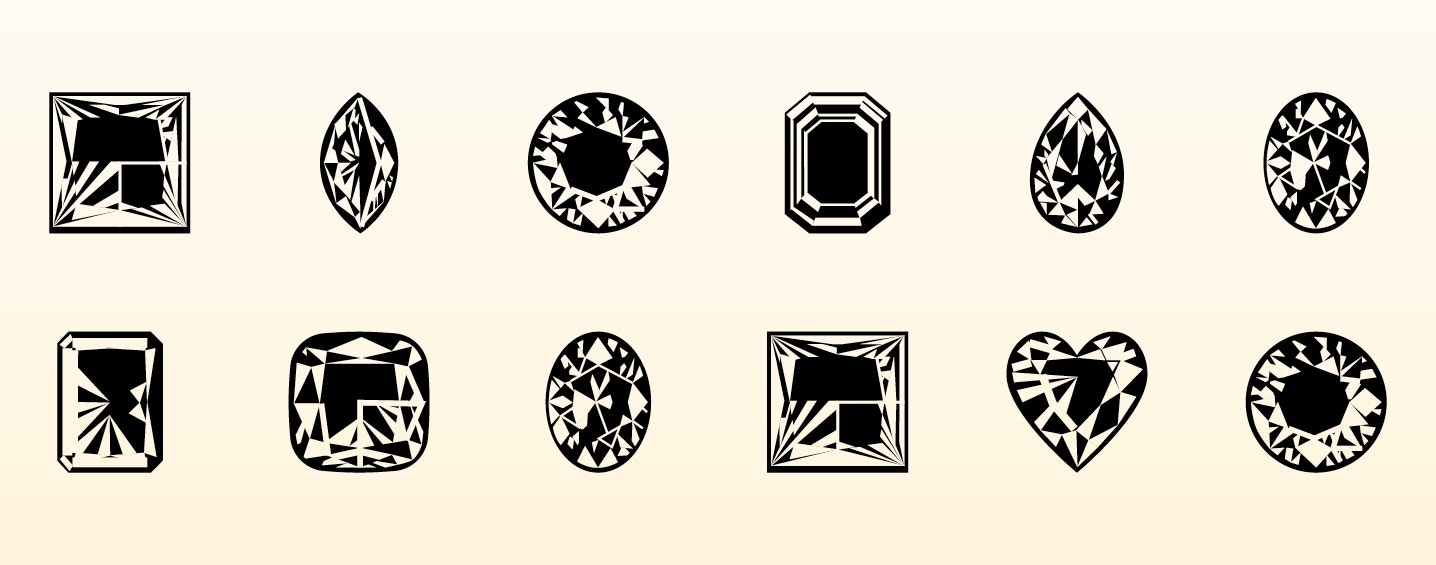Diamond clarity refers to the presence or absence of external blemishes and internal inclusions within a diamond. Clarity is a crucial aspect when selecting a diamond, as it influences both the diamond's aesthetic and its value.
What is Diamond Clarity?


Diamond clarity refers to the presence or absence of external blemishes and internal inclusions within a diamond. These imperfections can impact a diamond's brilliance, sparkle, transparency, and overall appearance. Given the extreme conditions under which diamonds form, it's exceptionally rare to find a diamond without these inclusions, making internally flawless diamonds almost impossible to come by.
The Diamond Clarity Scale
- Flawless (FL): These diamonds have no internal or external imperfections. They are extremely rare and command a high premium due to their exceptional clarity.
- Internally Flawless (IF): These stones may have microscopic surface blemishes but are free from internal inclusions. They are also rare and highly valued.
- Very Very Slightly Included (VVS1, VVS2): Diamonds with extremely tiny inclusions, difficult to detect even under 10x magnification by a trained eye. VVS2 stones have slightly more inclusions than VVS1.
- Very Slightly Included (VS1, VS2): Minor inclusions that can only be detected with a highly trained eye under 10x magnification. These diamonds offer excellent value and are widely sought after.
- Slightly Included (SI1, SI2): Inclusions are noticeable under 10x magnification and sometimes visible to the naked eye. Eye-clean SI1 diamonds are highly sought after for their affordability compared to higher clarity grades. SI2 diamonds can also be eye-clean and budget-friendly.
- Included (I1, I2): Diamonds with eye-visible inclusions or blemishes that significantly affect their appearance. I1 diamonds have fewer and smaller inclusions within this category.


The Importance of Diamond Clarity
Clarity is a crucial aspect when selecting a diamond, as it influences both the diamond's aesthetic and its value. Due to the harsh conditions in which diamonds are formed, flawless diamonds are extremely rare and carry a significant premium.
Types of Clarity Characteristics
Diamonds can have both external and internal clarity characteristics known as blemishes and inclusions, respectively. Evaluating these characteristics is essential for determining a diamond's overall clarity.
External Blemishes
Scratches
Polish lines
Chips
Abrasions
Surface graining
Internal Inclusions
Cavity
Bruise
Cloud
Crystal
Feather
Knots
Needle
Pinpoint
Key Factors in Diamond Inclusions
When evaluating diamond clarity, consider these five key factors:
- Size of Inclusion: Ranges from microscopic to visible to the naked eye. Larger inclusions can significantly impact appearance and value.
- Number of Inclusions: Fewer inclusions mean a higher clarity grade.
- Location of Inclusions: Inclusions near the bottom or edges can be hidden by the setting, while those in the center are more visible.
- Nature of Inclusions: Different inclusions affect a diamond's structural integrity and light reflection.
- Color of Inclusions: Black inclusions are more noticeable and generally less desirable than white inclusions.
By understanding these factors, you can better appreciate how inclusions affect a diamond's appearance, value, and overall desirability.



